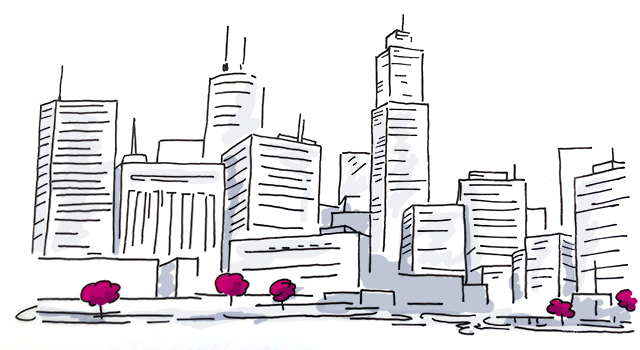
11 Clever Ways To Make Your Events More Eco-Friendly & Sustainable
If you want to plan truly environmentally friendly events, you have to start right at the beginning.
Some of the first planning decisions you make ” like the city and venue where you host the event ” can make the biggest impact. So it’s at this point, in the pre-planning stages, when event organizers have the most power to influence their event sustainability.
Here, we’ll share seven seriously effective ways to lower the carbon footprint of your event.
Discover How to Create Sustainable, Green Events in a Few Simple Steps

1. Hire the right partners
Many green meeting practices are driven by event planners ” things like recyclable name badges and paperless agendas. But hosting a sustainable meeting is largely dependent on working with other sustainability-minded partners.
When you contact potential vendors and partners, ask them about their event sustainability practices.
2. Choose green destinations
The single most impactful choice you can make for a greener event is where you host it.
Today, many cities and counties have a dedicated event sustainability planning department or a climate action plan ” and those things make a big difference. In general, that’s a sign that the community is more aware of their environmental impact. Better yet, the city might be running initiatives that will support your sustainability goals.
In fact, some convention and visitors bureaus even give event organizers sustainability information up front or provide full event sustainability-focused packages. For example, you can learn all about Chicago’s green initiatives on Choose Chicago.
A few more ways to pick an eco-friendly locale:
- See a list of environmentally minded venues with the Green Venue Report
- Reference a sustainability index like this one
- If you have a city in mind, check its overall sustainability performance

3. Keep distance and transportation in mind
How far from the airport is the convention center? How far apart are the convention center and your recommended hotels? The closer together, the shorter the ride to the convention center ” which typically means a lower carbon footprint.
Another green option includes public transportation like high-speed rail. If public transit is available between the convention center area and the airport or around the city, that helps!
Finally, consider the walkability of the convention center district. How many hotel rooms are located within walking distance (less than 1 mile) of the convention center? What about restaurants? The more accessible the main venue is to attendees on foot, the lower the environmental impacts.

[Tweet “If you want to plan truly environmentally friendly events, you have to start right at the beginning.”]
4. If needed, set up group transportation
If you have to choose a venue that doesn’t meet the above criteria, don’t write off eco-friendly transportation entirely. Set up carpools or shuttle buses so that you can transport more people at once.
5. Look for sustainability certifications
Find out the number of hotel properties within 2 miles of the convention center that hold a 3rd party sustainability certification (such as LEED, APEX/ASTM, Green Key, or Green Leaders). The more options, the better.
6. Remove potential waste from your events
First, make it easy for your attendees to go paperless. Send invitations via email or set up digital ticketing ” rather than sending paper invitations or tickets. Use an event app to communicate essential info about the event. Put your agenda online or in the app, too!
At the event, don’t hand out plastic water bottles and individually wrapped items to participants. Instead, place glasses and water pitchers in the meeting space.
7. Reduce energy and water consumption at your events
To reduce your energy and water impacts, ask the following questions:
- Do you hold any sustainability certifications?
- Venues that are LEED certified have followed a strict certification program in which the systems and programs throughout building are high efficiency and minimize waste.
- TripAdvisor GreenLeaders program is self-reporting system for hotels that have committed to a minimum level of green event practices and procedures at their facility. The higher the rating the more programs and infrastructure are in place.
- Can you keep the lighting to a minimum during move in and move out?
- Can you keep AC or Heat off during move in and move out when possible?
- Can you implement a power down plan and end of show day? (basically make ask that lights are turned off and that any other AV equipment enters a power saving mode a the close of show day.)
What can you easily influence as an event organizer? To reduce the energy and water use onsite, remember to eliminate bottled water from your event, ask the catering partner to not pre-pour water glasses for banquet events.
8. Streamline waste management at your events
To reduce the amount of waste that ends up in the landfill, ask the following questions:
- Are waste bins clustered in sets of recycling and landfill throughout the facility? If not, ask that they be clustered in that way or that you want clearly marked recycling bins next to every trash can in the center. Check out the GVR Garbage Gallery for images of good waste signage. Or use this nifty link to create your own green event compost, recycling and landfill signage for free!
- What is the average waste diversion for the venue? (this will give you an estimate of how much waste from each show makes it to the landfill and how much is recycled, anything over 50% in the US is pretty great)
- Do you have a list of non-profits or community programs that you work with on a regular basis to donate left over conference materials?
What can you easily influence as an event organizer? To reduce waste going out, reduce what you bring on site. Encourage exhibitors to reduce or eliminate give-a-ways onsite that often end up in the trash. Track what is left over at the end of your events and see what you can do to reduce printed materials, badges lanyards etc. If you can reduce the quantity to produce you can save money and save space in the landfill.

9. Opt for event food & beverage that’s sustainable
To reduce the impacts of food and beverage ask the following:
- Request that condiments (sugar, creamer etc.) are to be served in bulk
- Does the kitchen compost organics? Do you recycle kitchen grease?
- Meatless Monday Menu “ to produce a pound of beef it takes 1,799 gallons of water and releases about 22 lbs of carbon.
What can you easily influence as a green event organizer? Incorporate as much seasonal/local/and organic food offerings as possible, ask if the venue has an onsite garden or local or regional food vendors that can round out your menus. (local or regional can be defined by less than 250 miles)
10. Go green in your event planning
Do you still use a huge binder to keep track of all the details of an event? Save paper (and time!) by using a technology platform for planning purposes!
Here’s another detail you might not have considered: Do you need to have planning meetings in person? Virtual meetings are a great alternative for people who aren’t in the same place (you save gas too!).
11. And of course, recycle at your events
We couldn’t leave good old fashioned recycling off the list! In the events world, recycling comes in many forms:
- Donate unused materials: Things like vinyl signs and poster boards could be repurposed. Look for organizations like Repurpose America or your local “hard-to-recycle materials” facility.
- Make it easy for attendees to recycle: Place recycling bins next to trash cans so guests can easily deposit recyclables.
- Choose reusables: Stay away from disposables. For instance, insist on reusable flatware and cloth napkins, or collect plastic name badge holders at the end of the event.
Now You’re Ready to Make Your Events & Meetings Greener!

Want to take event sustainability planning to the next level? Put “greening” requests in your RFPs. This way, your commitment to eco-friendly events is clear to all potential vendors. Up next learn how to design the best event seating plan.
Want to learn more about eco-friendly events?
The most environmentally friendly events will partner with venues certified by a 3rd party for sustainability, focus on the environment when it comes to transportation and waste, and make environmental consciousness an important component of the event itself.
A green event is an event that incorporates environmental consciousness with the goal of minimizing negative impact on the environment by using fewer resources and reducing waste. The four main pillars of green events are an environmentally friendly venue, F&B options that reduce waste, communication that does not produce trash, and transportation options beyond personal vehicles.
Purchase supplies that can be served in bulk-sized containers, make recycling options more prominent than trash bins, reuse as many resources as possible, communicate digitally, compost what you can, and educate your attendees.
More like this:
8 Paperless Ticketing Apps for Speedy Registration
Why First-Tier Cities Aren’t Necessarily the Best Event Destination
5 Things to Look for When Selecting a Destination for Your Event

